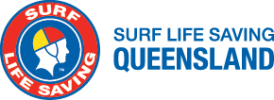Understand that you and your vehicle are high profile and you have a responsibility to maintain the professional image of your club and Surf Life Saving Queensland.
Safety
Always ensure you operate your vehicle in a safe manner. Always be aware of the safety to yourself and to members of the public.
Procedures for Operating
1. Always follow your standard operating procedures
2. Before driving on the beach:
- Ensure your hazard lights are on.
- Ensure your amber flashing lights are on.
- Ensure the beach access is free of pedestrians.
- If you have been stationary, walk around the vehicle and check for people and personal belongings under the vehicle.
- Drive at walking pace or slower in highly populated areas.
- Avoid tight left turns on the beach as field of vision is greatly reduced when turning left.
- Always ensure 4WD/SSV/Tractor is disengaged once off the beach.
- Limit your speed to 20kph or less on designated bathing reserves & 5kph between the flagged areas.
- Maintain your tyre pressure suitable to the driving conditions. If the tyres have been deflated for beach use, reinflate as soon as practical.
- Ensure all passengers have a fastened seat belt on.
SSV & Tractor Registration Specifications
All tractors and SSV’s used for life saving purposes must hold a Queensland Transport registration and a concessional registration plate.
Vehicle on beach location and safety
All operational 4WD vehicles and or SSV’s are to park in a designated area on the beach. This area can be used as a secondary stationary observation platform for the lifesavers to observe the water. Cones should be placed immediately behind the vehicle and down each side to enable the vehicle to have a clear pathway to the water’s edge. This is to ensure that the patrol can quickly move the vehicle in the event of an emergency of general use. The Patrol Captain should use their discretion in the placement of the 6 cones based on beach conditions, i.e. extreme tides, erosion or extended beach area. The 6 cones will be based on the location of vehicle, where possible the vehicle should be parked near the patrol arena. If this is not possible, due to beach size, further precautions maybe needed to ensure safety when operating the vehicle.
Where a vehicle is parked at the bottom of the beach access, a reasonable area should be marked off to allow the vehicle to safely move off and make appropriate turns to safely move down and along the beach. It is highly recommended that vehicle movement be minimised at beaches where there are large crowds.
When a 4WD vehicle is stationary, they are to have a single tall bollard style hazard identifier placed at the front centre of the vehicle, that will be viewable from the driver seat. The tall bollard style hazard identifier is to be removed as a part of the Lifesavers safety walk around the vehicle and check for people and personal belongings under the vehicle.
It is a requirement to place a bollard in front of a stationary SSV.
The tall bollard style hazard identifier is to be used at all times when the vehicle is stationary on the beach – as pictured below.

All 4WD vehicles must have a yellow sticker, as outlined, above the driver’s side door handle.




Post your comment on this topic.
Lisa Maddison wrote: Oct 24, 2024
Pretty sure 5km in flagged area and 20km outside flagged area